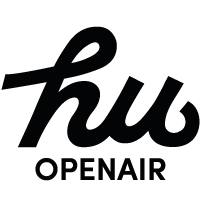Between 45 and 49 million travellers – 55% of which are Italians – will choose outdoor facilities for their holidays in Italy this summer. On the plus side, the overall figure is positive according to forecasts for the national sector in the fifth edition of Osservatorio del Turismo Outdoor, created by Human Company in collaboration with THRENDS, a company specialising in analysis and strategies in the Tourism & Hospitality sector.
According to the two scenarios outlined by the report on possible trends in demand for outdoor holidays in summer 2021, understood in its broader sense, i.e., including not only camping, camping villages and tourist villages, but also mountain refuges and farmhouses, the national sector will see a drop of between -14% and -22% compared to pre-Covid data. According to Bruna Gallo, CCO of Human Company: “This forecast once again confirms a drop compared to the three-year period 2017-2019, even if – despite the serious impact suffered by the tourism industry worldwide – it demonstrates the resilience of the outdoor sector in Italy. This analysis is also supported by the sector’s intrinsic features: flexibility in the range of offers, spending sustainability and the link with the basic values of holidays such as leisure or proximity to nature”.
According to Giorgio Ribaudo, director of THRENDS: “The prevalence of a local international market (Germany, Austria, Switzerland, France, Belgium) makes the outdoor segment particularly well prepared to react to shocks in demand such as the current one. The near absence of intermediation, accessibility by car and the very flexible accommodation solutions also guarantee the segment the possibility of a surge in bookings, which we believe will materialise, especially between 15/05 and 15/06. In any case, the current uncertainty will certainly weigh on June’s performance. This month will record a decline, which is unfortunately expected to be between -30 and -45% compared to the historical volumes for 2017-2019. The messaging and actions in these days are also impacting the Whitsun period”
Two scenarios for the outdoors
Starting from the situation analysis with regard to restrictions and vaccinations in the main incoming markets and using Istat data for the three-year period 2017-2019 as a reference for the sector’s history – which recorded an average of approximately 81 million visits and an expenditure value of 4.3 billion euros in the pre-Covid period – the report suggests two possible scenarios for outdoor tourism: in the “best case” scenario, with a relaxation of restrictions from 30 April, the total loss of spending in the Italian sector would amount to 435 million euros with 49 million visitors, while in the “worst case” scenario, if restrictions were to continue until 30 May, the loss would reach 686 million euros and 45 million visitors. The best scenario for visitors from the top 5 foreign markets (Germany, the Netherlands, Switzerland, Austria and France) shows a contained loss of between -19% and -29%, while the domestic market stands at -3.2%. On the other hand, the worst scenario estimates a reduction in foreign visitors ranging from -27% for Germany and Austria to -34% for the Netherlands, with the Italian market registering a decline of -13.8%. The main evidence shows that, contrary to the pre-Covid period, the decrease in Italian demand is still lower than that from abroad, suggesting a full return of the domestic market in August and September to historical levels in the best-case scenario. On the other hand, if foreign demand sees significant drops compared to pre-Covid numbers, with major contractions between June and July – the months that could be affected due to their temporal proximity to the period when the pandemic crisis may be resolved – the differential between the two scenarios is not that significant since some major long-haul markets will have a very slow recovery. Instead, as regards demand from German-speaking countries, it is very useful to consider the observations for the upcoming Whitsun period as a meaningful measure of flow from the most relevant market for the Italian outdoors. Compared to 2019, facilities on the Upper Adriatic (Bibione, Lignano, Caorle, Cavallino) are seeing increased bookings with occupancy rates close to 50%, despite the overall decline of 35%; the Lake Garda area shows an on-the-book rate lower by 17/18%, while volumes for the Tuscan coast, where bookings accumulate more slowly, remain very low.
Impact factors for 2021
Generally speaking, the tendency towards travel normalisation is noticeable on the market, and comparisons with the last summer season highlight how people have the desire to “get moving” in the context of greater safety and tranquillity with regard to health issues.
In this context, the tendency towards reducing travel distances and restricting the booking window between bookings and stays will be confirmed, even immediately after the relaxation of restrictions, thus favouring domestic destinations or neighbouring countries. A further trend detected in 2020, which will be repeated, is the search for holidays in proximity to nature in quieter, less crowded places with open-air activities, perhaps outside the better-known destinations.
Based on the data recorded last season, the new edition of Osservatorio confirms the resilience of one Italian tourism sector which, following the constant growth of the pre-Covid years, has experienced a real acceleration during the pandemic. By focusing on quality and innovation, the open-air sector has seen increasing interest from Italians who find the ideal answer to new needs and expectations in the outdoor solution: a stay in proximity to nature, in total safety and equipped with every comfort. Luca Belegni, CEO of Human Company, concludes: “The new edition of Osservatorio del Turismo Outdoor confirms the positive trend already seen last season, highlighting the growing confidence of customers, especially Italians, in open-air hospitality. We are convinced that the domestic market can constitute an important basis from which to restart with optimism and prudence for the summer of 2021. We believe in a recovery towards a “new normal”, but that it will undoubtedly be gradual. Overall, after a very complex first half, we expect an increase in turnover starting from June compared to last year, which basically means a gradual recovery for the pre- and post-season periods and maintaining numbers during the high season. With this in mind, the Group will continue to invest in innovation, first of all digitisation processes, services and training of our staff to continue to offer – as we always have – safe, high-quality holidays in facilities situated in the most beautiful corners of our country, between uncontaminated landscapes, towns and cities rich in history and art, offering memorable, multisensory experiences”.



